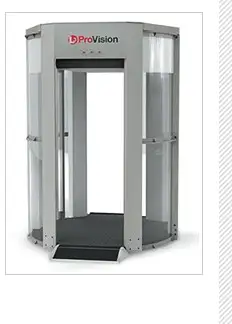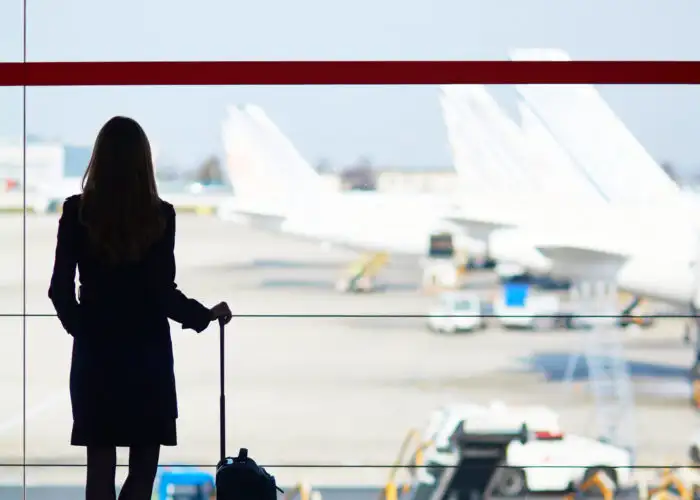
Controversial full-body imaging scanners are now being tested in Tulsa International Airport, with machines set to arrive in San Francisco, Miami, Albuquerque, Salt Lake City, and Las Vegas in the near future. These scanners have been in place in several airports for months, but this is the first time they will replace metal detectors in the security line. Previously, full-body imaging was used in conjunction with metal detectors to test its effectiveness—the full-body scanners performed very well.
With this new round of tests, the Transportation Security Administration (TSA) is looking at operational efficiency to see if full-body scanners can handle normal security traffic. Passengers may refuse the new machine, and instead opt for a metal detector and pat-down.
These scanners are designed to locate non-metallic weapons hidden beneath clothes, such as plastic and liquid explosives, in addition to metallic items. In doing so, the scanners generate a detailed image of a passenger’s nude body. These images are deleted within seconds of being taken, giving TSA officials just enough time to scan for suspicious items before the image is erased. But for some, that’s a few seconds too long.
“We’re getting closer and closer to a required strip-search to board an airplane,” Barry Steinhardt of the American Civil Liberties Union told USA Today. Indeed, privacy advocates have long decried these machines, which they claim invade an individual’s privacy and subject innocent passengers to an unnecessary and embarrassing level of scrutiny. Some also contend that many passengers do not understand what the scanners do, and therefore may be consenting to a procedure they may not otherwise accept.
The TSA, unsurprisingly, sees things differently. TSA spokesman Christopher White tells USA Today the TSA “struck a very good balance between security and privacy,” and it’s true the TSA has taken measures to minimize privacy issues. According to the TSA website, “In addition to not storing, printing or transmitting the image, the transportation security officer will be viewing the image on a stand-alone machine that is located in a remote area from the screening process.” Also, “The transportation security officer attending to the passenger at the machine is unable to see the image being produced.”
For the past seven years or so, air travelers have become quite familiar with the thin line that exists between security and personal rights. We’ve dealt with nuisances like taking our shoes off and following the 3-1-1 rule, as well as TSA regulations that inch closer to privacy violations, such as post-metal-detector pat-downs. But I think it’s fair to say that full-body-imaging brings the security versus personal rights debate to new realms. Is this level of privacy worth sacrificing in the name of security? Or, by submitting to these scanners, are we forfeiting the very rights we strive to protect? I’d love to hear what you think, so please leave a comment below with your thoughts.
We hand-pick everything we recommend and select items through testing and reviews. Some products are sent to us free of charge with no incentive to offer a favorable review. We offer our unbiased opinions and do not accept compensation to review products. All items are in stock and prices are accurate at the time of publication. If you buy something through our links, we may earn a commission.
Related
Top Fares From Columbus, OH
Today's Top Travel Deals
Brought to you by ShermansTravel
Shop and Save with Country Inns...
Patricia Magaña
 Hotel & Lodging Deals
Hotel & Lodging Deals
$229 -- Chicago: Discounted Rates and...
Francesca Miele
 Hotel & Lodging Deals
$229+
Hotel & Lodging Deals
$229+
$188 -- Honolulu: Save on Oceanview...
Abigail Lamay
 Hotel & Lodging Deals
$188+
Hotel & Lodging Deals
$188+






